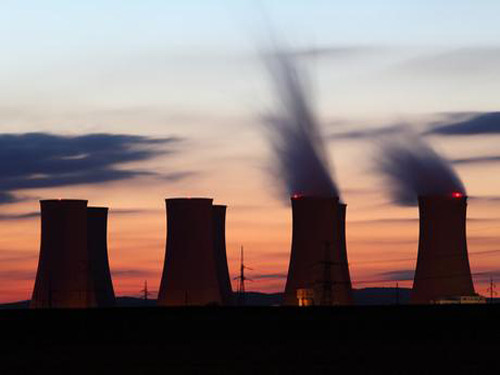
More than 70% of the listed companies in the coal industry’s debt-to-equity ratio climbed by 6 70% above the warning line.
Li Chaolin, a coal expert, believes that if the profit is relatively high, the asset-liability ratio is high. It does not matter; however, if the profit level is very low or even a loss, there will be financial risks.
Wind statistics show that of the 31 listed companies in the coal mining industry in the Shenyin Wanguo [industrial] industry classification, the asset-liability ratio has seen a year-on-year rise in the first half of the year, accounting for about 71% of the total, representing a year-on-year decline. Only 9 of them. Six of them have a debt ratio of more than 70%, accounting for nearly 20% of the total.
Lu Yaohua, vice president of the China Coal Industry Association, once told the media that the current difficulties faced by coal companies are greater, and the issue of oversupply is prominent in the short term. As the profits of coal companies decline, the average debt ratio of large-scale enterprises is 66.96%. Once they exceed 70%, they are very dangerous and the operating risks will increase greatly.
Li Chaolin, a coal expert, said in an interview with reporters that since the beginning of this year, the debt-to-equity ratio of listed companies in the coal industry has increased, mainly because coal prices have continued to decline, and the market environment of the coal industry has been relatively poor, and the profitability of coal companies has dropped drastically. For many coal companies, there is little room for profit. At this time, the company's asset-liability ratio will inevitably rise.
Lower earnings highlight financial risks
Recently, China Coal Industry Association released "2014 China Coal Enterprises 100 Analysis Report" shows that in 2013, the total net profit of China's top 100 coal companies was 84.157 billion yuan (the same below), a significant drop of 44.18% year-on-year. Among them, 21 companies suffered losses and 77 net profits decreased year-on-year.
Last year, the top 100 coal enterprises completed a coal output of 305 million tons, which has dropped from an average annual growth rate of 13.72% since the 11th Five-Year Plan period to 5.47%, setting the lowest level since the 11th Five-Year Plan period. At the same time, the asset-liability ratio of 100 companies reached 67.59%, an increase of 1.97 percentage points over the previous year, and corporate financial risks continued to increase.
Li Chaolin believes that whether corporate financial risks will increase due to the increase in asset-liability ratio, mainly depends on whether the asset-liability ratio is commensurate with the profitability of the company. If the profit is relatively high, the asset-liability ratio is high, and profits can cover corresponding debts. , Financial costs; but if their own profit level is very low, or even a loss, then the increase in asset-liability ratio, the financial risks will be highlighted.
Another industry expert analyzed that there are many difficulties and contradictions facing the development of coal companies. For example, the overcapacity of coal is intensifying, and the task of removing capacity is arduous; the profitability has fallen sharply, and the loss area has continued to increase; The slowness and low efficiency of capital operation have seriously hampered the development of the company.
The debt ratio has soared
According to statistics from Wind, the debt-to-asset ratio of the three listed companies including *ST Xiancheng had exceeded 70% in the same period of last year. This year, the number has increased to six.
In the first half of last year, the asset-liability ratio of *ST Xiancheng was close to 102%, and it was insolvent. Although this figure dropped by 86.5% in the first half of this year, it was still the highest asset-liability ratio among listed coal companies.
However, in May of this year, *Zhang Xianfeng, general manager of Zhang Xianfeng, said at an event that the company’s coal business all came from the former Guizhou subsidiary. Now that the Guizhou subsidiary has entered bankruptcy liquidation procedures or the equity has been transferred, the company no longer implements it. Control, the company has no coal business.
The above statistics show that in addition to *ST Xiancheng, the other five asset-liability ratios have exceeded 70% of the warning line respectively for the Shenhuo shares, Shan Coal International, coal gasification, Yongtai Energy and SDIC Xinji, and these five The asset-liability ratio climbed up to varying degrees compared with the same period last year.
At present, the coal industry in the country is caught in a situation of internal and external difficulties. Take Shanxi Province, a coal producing province, as an example. According to data reported by a group of media, as of the end of March 2014, all kinds of financing of Tongji Coal Group and Jinneng Company has exceeded 100 billion yuan. The rest of the coking coal, Yang Coal, Chunan, Shan coal import and export companies and other loans are also between 40 billion -800 billion yuan. At that time, the average asset-liability ratio of Shanxi's five major coal groups had reached more than 75%.
Li Chaolin said that under the background of the introduction of restrictions on coal consumption in Beijing, Tianjin, Luto, and cities, many coal companies have already faced losses and the losses have continued to expand; under the limited production and insurance prices of major coal companies such as Shenhua and China Coal, coal Although prices are currently showing signs of falling, the oversupply market environment is still far from changing. At this time, the listed company's asset-liability ratio in the coal industry has increased, indicating that coal companies will face severe financial risks.
Aluminium Furniture,Aluminium Outdoor Table,Aluminium Bistro Table,Aluminium Table Legs
KAM KIU ALUMINIUM GROUP , https://www.kamkiualuminium.com